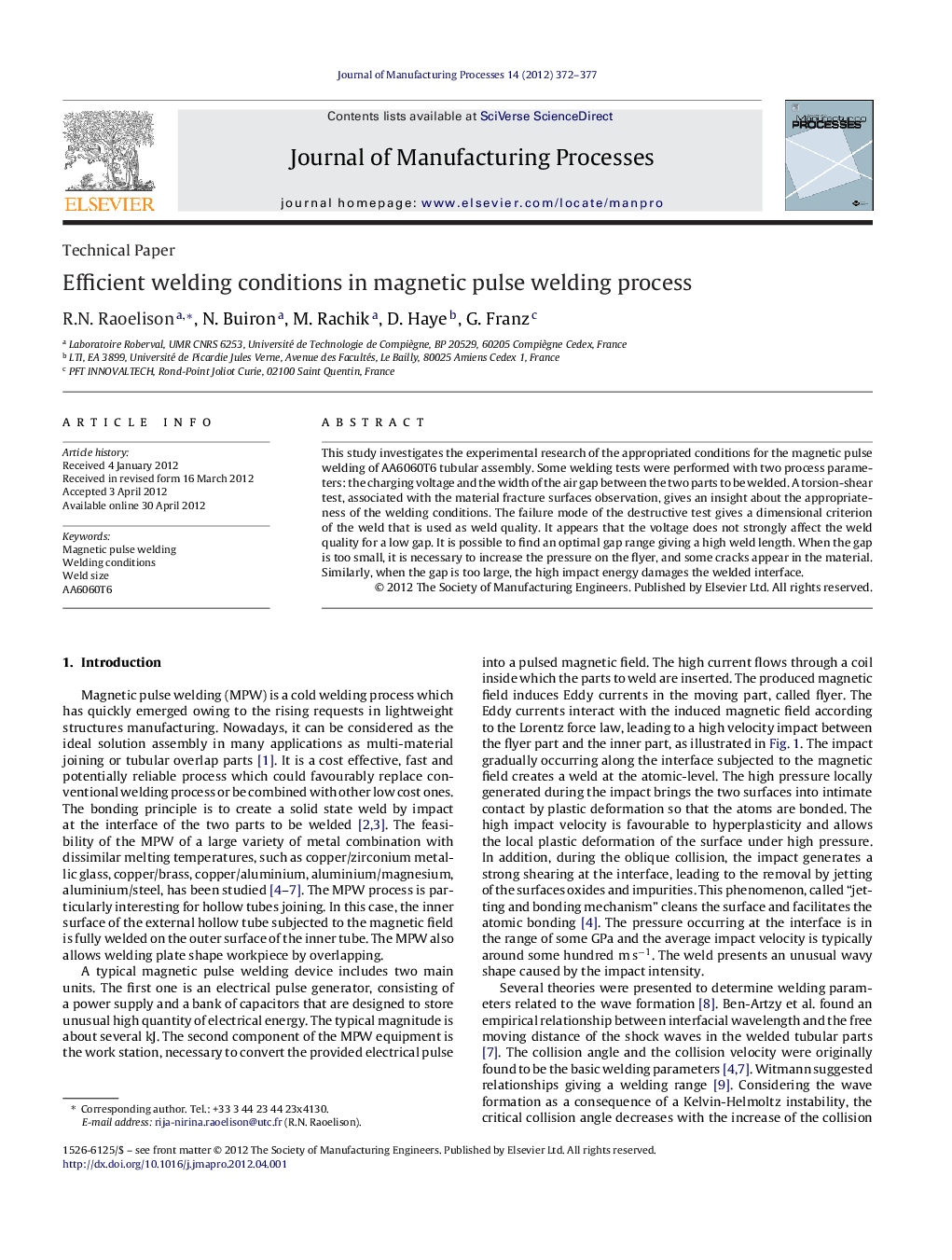| Article ID | Journal | Published Year | Pages | File Type |
|---|---|---|---|---|
| 1697211 | Journal of Manufacturing Processes | 2012 | 6 Pages |
This study investigates the experimental research of the appropriated conditions for the magnetic pulse welding of AA6060T6 tubular assembly. Some welding tests were performed with two process parameters: the charging voltage and the width of the air gap between the two parts to be welded. A torsion-shear test, associated with the material fracture surfaces observation, gives an insight about the appropriateness of the welding conditions. The failure mode of the destructive test gives a dimensional criterion of the weld that is used as weld quality. It appears that the voltage does not strongly affect the weld quality for a low gap. It is possible to find an optimal gap range giving a high weld length. When the gap is too small, it is necessary to increase the pressure on the flyer, and some cracks appear in the material. Similarly, when the gap is too large, the high impact energy damages the welded interface.
► The efficient welding conditions in MPW rather depend on gap increase than on charging voltage variation. ► The size of the weld given by a torsion-shear test reveals the weld quality. ► There is an optimum range of the gap giving a high weld size. ► The low and high gaps are detrimental to the integrity of the welded assembly.
